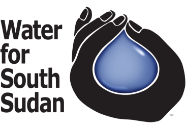
Water Storage & Distribution
Solar energy is abundant during the dry season in South Sudan. Because of this, the sun’s energy is harnessed using solar technologies to pump water into the elevated water storage tank. Gravity allows the water to flow through underground pipes directly to water kiosks throughout the community.
As a result of this process, residents turn on a faucet to fill their jerry cans. This technology ultimately decreases the distance and time it takes to collect water.
What are the Components of a Water Storage & Distribution System?
Well drilled with solar power pump
Elevated water storage tank
Underground piping from tank to five to six water taps (kiosks) to locations throughout the community: community center, school, market, gardens, and animal watering trough
Construction of a sustainability room to protect the electronics that power the system, a generator shelter to protect the generator from South Sudan’s harsh elements, and security fencing to protect the entire system from potential damage
Once the water storage system supply lines are connected to solar and generator power, water storage system operators are trained to oversee the functionality of the solar-powered water pump, ensure the cleanliness of the water tank, and maintain the area surrounding the storage unit.
Credit: Kelsey Phillips, Rowan University
The Impact
An integral piece of this project includes maintenance training for the water storage system. WFSS trains the water storage maintenance person to oversee the functionality of the solar-powered water pump, ensure the water tank's cleanliness, and maintain the area surrounding the water storage unit.
Additionally, each water storage unit impacts 2,000 people or more, depending on the size of the community.







